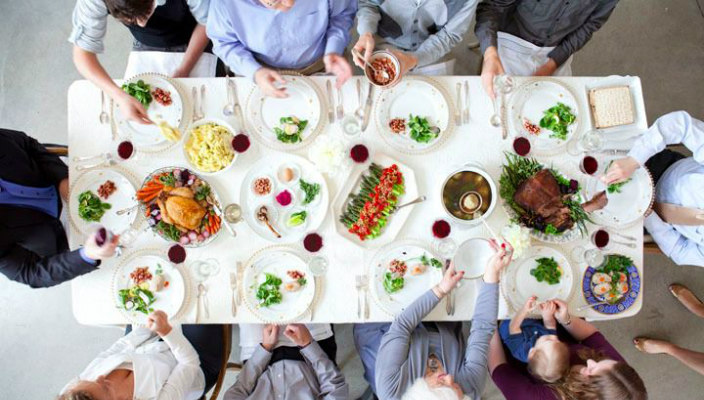
One of my favorite things about my family’s Passover Seder is the charoset selection. For as long as I can remember, my father has prepared different varieties of this seder plate staple. Charoset is meant to symbolize the mortar used by the Israelites when they were slaves, but tastes sweet, like the freedom we now enjoy. This year, in addition to the apple, nut and wine-based Ashkenazi charoset, traditional to my ancestors in Eastern Europe, we had Egyptian charoset made mainly from dates, a spicy Persian Charoset and mango and coconut charoset balls of Cuban origin.
On Passover, when nearly every food is symbolic, these different charoset varieties remind me of the vibrancy of the global Jewish community. While we all may retell the same story of liberation each year, we each tell it according to our own customs and connect it to our own experience.
Some of the most unique customs from around the world are geared towards reliving the Exodus from Egypt. Jews of Afghan origin (there is currently only one Jew living in Afghanistan) and from other Middle Eastern countries during the Seder gently hit their neighbors with scallions, symbolizing the whippings the Israelite slaves endured. Some Syrian Jews wrap a piece of matzah in a cloth and carry it as if it were a sack carried out by the Israelites. Everyone who did this would act as if they were leaving Egypt and traveling to Israel. North African Seders often begin with the leader circling the Seder plate over each participant’s head, reminding them that they exited Egypt in haste. In Poland, a group of Hassidic Jews reenact the crossing of the Red Sea on the seventh day of Passover, even pouring water on the floor and walking through it.
Each of these actions not only adds a different flavor to the holiday, but provides a different way to put ourselves in the shoes of our ancestors. Indeed, the directive to retell and relive the Passover story is one of the central commandments of the holiday. This mandate not only calls us to experience the Exodus as individuals, but to recognize that all Jews, no matter where they are, share a stake in the Jewish story. We can’t see ourselves as having gone out from Egypt without seeing our fellow Jews walking next to us. Taking time to understand or even incorporate Passover traditions from around the Jewish world can help us all learn about the diversity of Jewish life beyond our own immediate communities and build stronger connections with the global Jewish community.
To learn more about international Passover traditions, check out this guide for families from ReformJudaism.org. You can also find out more about World Jewry by visiting the RAC’s issue page.
Related Posts

Remarks from Rabbi Eliana Fischel at Jewish Gathering for Abortion Access

Teens from North Carolina Speak About Environmental Justice


